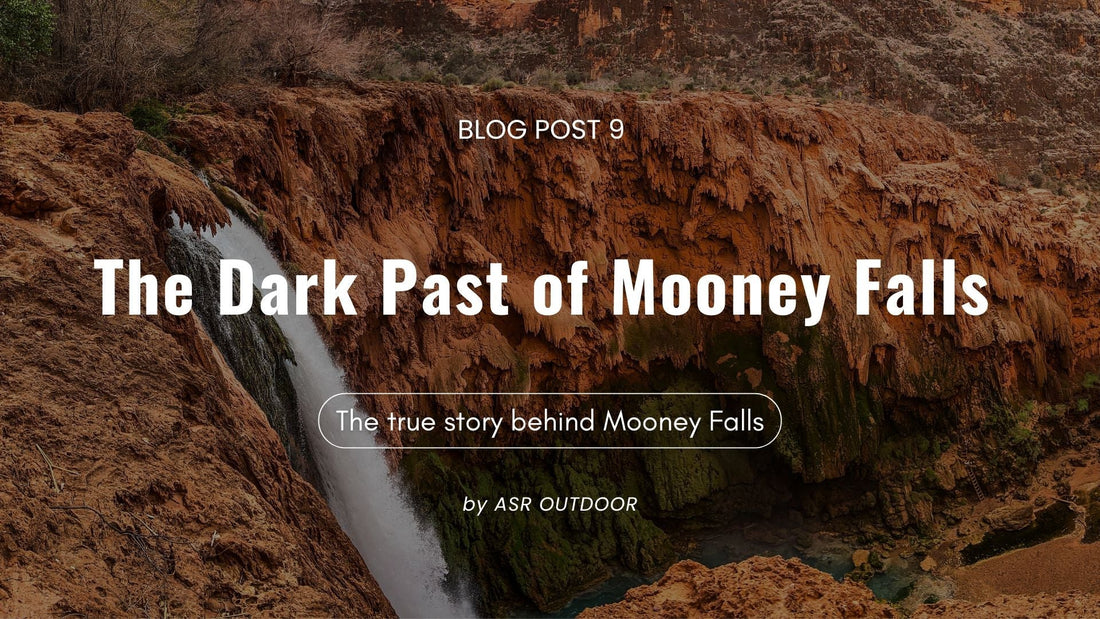
The True Story Behind Mooney Falls: Death, Miners, and Tunnels in the Grand Canyon
A Waterfall With a Dark Past
There’s something surreal about standing at the brink of Mooney Falls. The roar of turquoise water plummeting nearly 200 feet, the mist clinging to the cliff walls, and a descent trail that feels more like a journey into another world—it's one of the most dramatic and unforgettable sights in all of Havasu Canyon.
But what really sets Mooney Falls apart isn't just its beauty—it's the history etched into the rock itself. And as someone who works at ASR Outdoor, a company rooted in gold panning, prospecting, and rugged outdoor gear, I can’t help but feel a deeper connection to the story behind this place.

A Prospector's Legacy
Mooney Falls is named after D.W. Mooney, a prospector who tragically fell to his death in 1882 while exploring the canyon with a group of fellow miners. The legend goes that he was being lowered by rope down the cliff when it jammed, leaving him hanging for days until the rope broke. It's a harrowing tale—but not entirely accurate.
Thanks to some excellent historical digging, we now know the truth is a little less dramatic—but just as compelling.
Truth, Blasted from Stone
Alphonso Humphreys, one of Mooney’s partners, later wrote that the fall happened quickly—Mooney died instantly, and the group had no way to reach his body. It wasn’t until eleven months later that they returned with more men and a plan to recover and bury him.
With the help of a Havasupai guide, the group located a small cave near the falls. From there, they blasted and carved a tunnel, chiseling footholds into the rock and setting iron stakes into the cliff wall. The path they forged became the descent route that modern hikers still use today to reach the base of the falls.

If you’ve ever picked up a gold pan or rock hammer and followed a whisper of treasure into the backcountry, this story hits close to home. At ASR Outdoor, where we live and breathe outdoor tools and gear, this kind of perseverance and ingenuity is what we’re all about.
Natural Formation—or Human Effort?
There’s some debate about whether the tunnels through the travertine cliffs are natural or man-made. Some say they were carved by water over time, while others—including experienced hikers and geologists—point to clear evidence of human construction: squared-off tunnel edges, chisel marks, and intentional steps.
Most likely, it’s a blend. Natural formations were expanded and reinforced by hand—a mix of nature’s chaos and human determination.
For a deep, well-researched dive into the history and myth-busting around Mooney Falls, I highly recommend checking out Tom Chester’s Mooney Falls article. It pulls together historical letters, geological insights, and first-hand observations that paint a much fuller picture than what most guidebooks offer.

The Ladder and the Legend
Once upon a time, a wooden ladder extended down the cliff, connecting the tunnels to the base of the falls. Locals used to scale it and even dive from it into the pools below—a kind of rite of passage. After a serious injury in 1954, the lower section was removed for safety, but you can still see the upper remnants clinging to the rock.
Today’s descent still requires focus, respect for the canyon, and a bit of grit. But it’s safe enough for adventurous hikers, thanks to improvements like chain handholds and better steps—though the adrenaline is still very real.
Adventure, Then and Now
Whether you’re hiking, camping, or striking out with a gold pan in hand, Mooney Falls connects the past with the present. The same spirit of discovery that drove those 19th-century prospectors is alive today in anyone who steps off the grid and into the wild.
At ASR Outdoor, we’re proud to carry the torch of exploration. The tools may be more refined now—our portable sluice boxes, camping gear, or gold panning kits—but the essence is the same: adventure, ingenuity, and respect for the wild.
So if you ever find yourself ducking into the tunnels beside Mooney Falls, just remember—you’re not just descending a cliff. You’re walking a trail carved by stories, sweat, and the long echo of the American frontier.
Big thanks to Tom Chester for preserving and sharing the history of Mooney Falls. His detailed research helped separate myth from reality—and made this story possible.
